#Costume Dramas
Explore tagged Tumblr posts
Text
chinese guzhuang fashion (actresses and actors at the film site of costume dramas)
#china#fashion#chinese fashion#guzhuang#costume dramas#jesus xiao shunyao why you so hot as always lmao#i like their little chemistry and their laughs hmmmm#li qin#zhou ye#li yitong#chen duling#cheng xiao#tian xiwei#cheng yi#xiao shunyao#gong jun#zeng shunxi#gulinazha#lu yuxiao#hou minghao#hanfu
395 notes
·
View notes
Text



TUDORWEEK2024 - DAY ONE: Your Favourite Tudor (members of the family that were born Tudors)
Elizabeth Tudor (September 7 1533 - March 24 1603)
‘All the trumpets, and knights and lords, and Heralds of Arms...and all the Bishops in scarlet, and the Queen, and all the footmen waiting upon the Queen to Westminster Hall; there met all the Bishops and all the Chapel with three crosses and in their copes, the Bishops mitred, and singing Salva festa dies; and all the street laid with gravel, and blue cloth unto the Abbey, and railed on every side, and so to the Abbey to Mass, and there her Grace was crowned’.
#tudorweek2024#perioddramaedit#perioddramasource#weloveperioddrama#onlyperioddramas#elizabeth i#elizabeth tudor#firebrand#elizabeth i 2005#elizabeth 1998#junia rees#helen mirren#cate blanchett#tudorerasource#historicwomendaily#*gifs#period drama#tudor dramas#costume dramas#tudor history#dailytudors
200 notes
·
View notes
Text
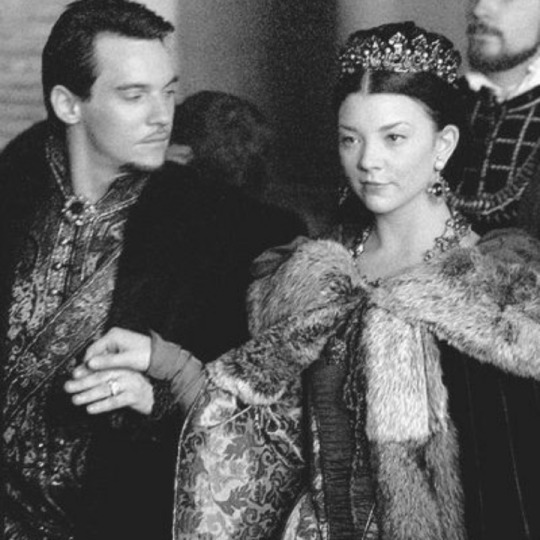
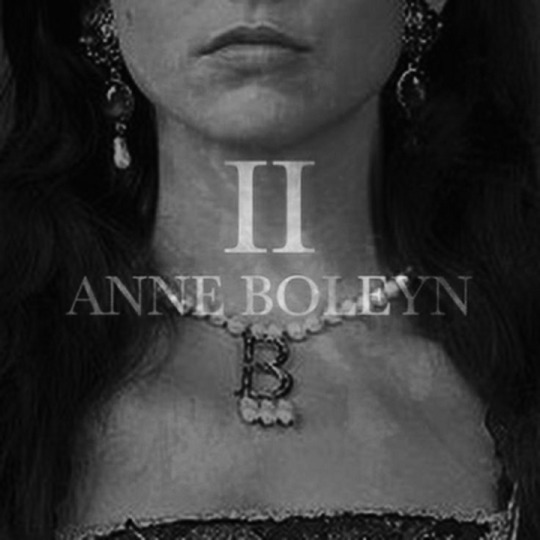




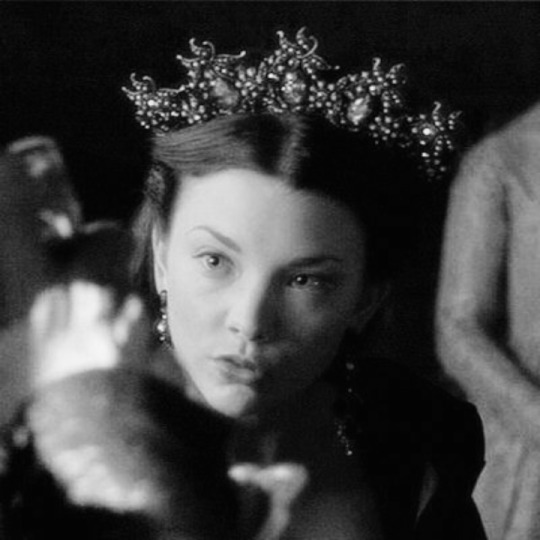


⠀⠀⠀⠀⠀⠀⠀⠀⠀⠀⠀⠀⠀❛the most happy❜
⠀⠀⠀⠀⠀⠀⠀⠀⠀⠀⠀⠀⠀
🕯THE TUDORS WEEK 2023 🕯
day five : best queen.
Natalie Dormer as Queen Anne Boleyn.
#TudorWeek2023#the tudors#showtime the tudors#natalie dormer#anne boleyn#history#henry viii#16th century#daily tudors#the tudor dynasty#period dramas#costume dramas#gifset#edit#the tudors edit#my mother forever#mother of cunts#cunty asf#period drama#thetudorsweek2023
64 notes
·
View notes
Text
One of the things I've noticed about the debate on historical accuracy in costume in period films is that the "artistic license" and "reimagining" lines are reserved almost entirely for dramas in which women make up the main characters. In which actresses are being made up to appeal to modern beauty ideals, which is-- contrary to claims -- the real reason behind costumers and makeup artists rejecting historical accuracy. No one wants to see Dakota Fanning with a plucked back hairline and lead white face paint. No one wants a size 2 actress in a REAL 18th c. corset, which actually increases your waistline.
When historical accuracy is no longer sexy to the modern taste, that's when it gets disregarded, or laughingly dismissed as "restrictive" and boring.
You know when historical accuracy in aesthetics is NOT dismissed? War movies. Period set films in which men are the main characters. Those costumers and makeup artists will take a GQ hotest man of the year and happily transform him into a groaty, muttonchops sideburns 19th century colonialist without blinking. They will even dye the mustache hair near his face yellowed so it looks like he had a life time of tobacco use. They will track down antique clothes and copy them to the thread, they will film with actual antiques in the actors' hands. No effort spared to make that trek through the 1910s Amazon look accurate. And why?
Because men looking sexy is not a requirement. It's not important enough to damage the integrity of the film. But women being unattractive? That's too much.
100 notes
·
View notes
Text
So I recently decided to reread a book I've read a couple years ago at least, it's quite a big book (660 pages, sans the bibliography) (made the mistake of taking it with me to London one year in my suitcase, definitely weighed it down a bit). Anyway, it's called The Year In Between, and it's a sequel to Sense & Sensibility, it's a really good book.
Finishing that book I decided to watch the mini series, may watch the film at some point.
I finished that book last week, and then started reading one of the Pride and Prejudice sequel books (part of a series, and I have 2 of them, unfortunately I lent book 1 to someone and haven't gotten it back, so don't have it anymore, so I'm reading book 2 for the moment) It's called Loving Mr Dary. And now I've started watching the P&P mini series, and it's suddenly gotten me thinking about Colonel Fitzwilliam, and I've no idea why, but now I'm wanting to write fic about him.
And there's not really much point to this post really. Just to say I'm rewatching a few of my favourite costume drama's. And doing a lot of reading as well.
I actually also have a sequel book for North & South (Elizabeth Gaskell one), might have to give that a reread at some point.
2 notes
·
View notes
Text
Got tagged by @crayuu:
1. Share the covers or posters of your six all-time-favourite media (shows, movies, manga, books, games, etc.)


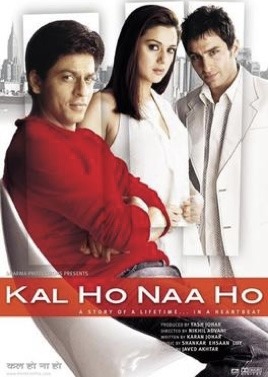



2. Create a cat using this picrew.

Not tagging anyone, but feel free to do this if you want to. :)
#memes#tonari no totoro#my neighbor totoro#north and south#kal ho naa ho#utahime#memory by lois mcmaster bujold#hexwood by diana wynne jones#anime#costume dramas#bollywood#jdrama#books books books
4 notes
·
View notes
Text
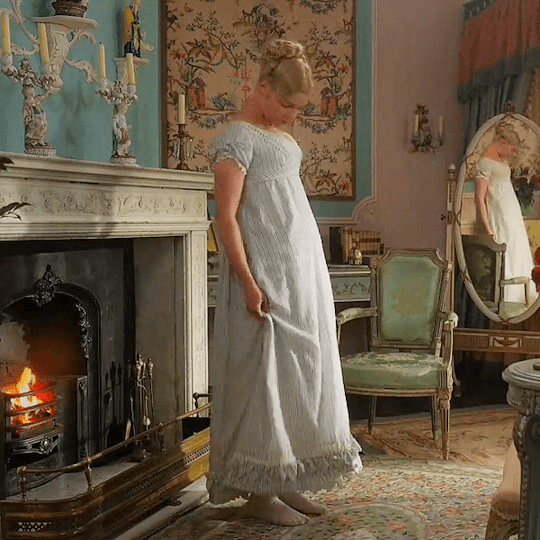
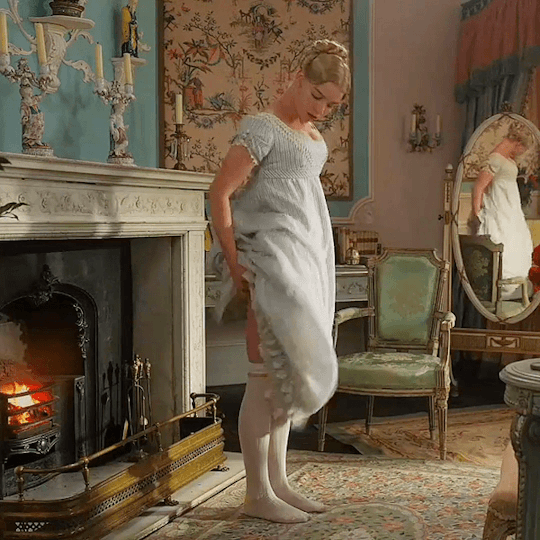
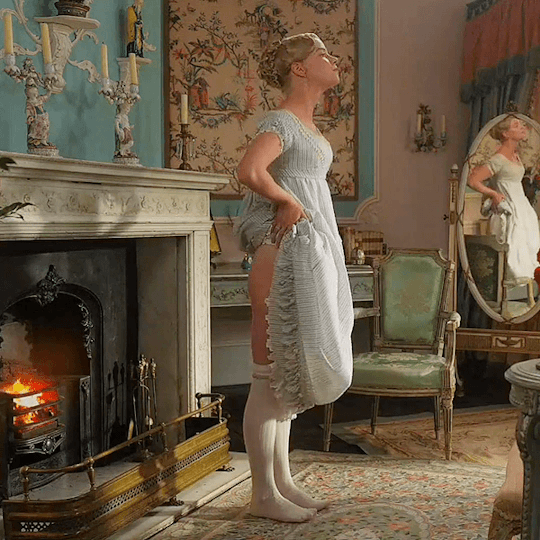
EMMA (2020)
dir. autumn de wilde
#emma 2020#jane austen#costume drama#period drama#perioddramaedit#perioddramagif#onlyperioddramas#perioddramasource#weloveperioddrama#filmtvdaily#austenedit#prideandprejudice#movieedit#moviegifs#filmgifs#filmedit#emma woodhouse#anya taylor joy#my gifs#mine
23K notes
·
View notes
Text
"LINCOLN" (1988) Review

"LINCOLN" (1988) Review
Can anyone recall the number of Abraham Lincoln biopics seen in movie theaters or on television? I certainly cannot. In fact, I do not know how many Lincoln biopics I have seen. Perhaps this is not surprising. Hollywood has created more productions (both movie and television) about the 16th President of the United States than any other who has occupied the White House. One of those productions was the 1988 two-part miniseries, "LINCOLN".
Based on Gore Vidal's 1984 novel, "Lincoln: A Novel", "LINCOLN" followed Abraham Lincoln's years in the White House, during the U.S. Civil War. Actually, both the novel and the miniseries began with President-elect Lincoln arrival in Washington D.C. in late February 1861, at least a week before his inauguration. Although the limited series covered his complete four years in office, the majority of the production only covered his first years in the nation's capital. During those years, Lincoln not only faced his struggles in conducting a civil war against those Southern states that had succeeded, but also his political enemies (from both parties) and the mental condition of his wife, First Lady Mary Todd Lincoln.
Without a doubt, I believe "LINCOLN" is one of the better Hollywood productions made about the 16th president. I would place it up there with Steven Spielberg's 2012 movie of the same title and the 1974-1976 limited series, which starred Hal Holbrook. In regard to the 1988 miniseries, director One aspect of this series that struck me as innovative was the cynical tone that seemed to surround Lincoln's portrayal and the miniseries' narrative. Past productions have touched on Lincoln's political oratory skills. Yet, these productions could not help but tried to portray the 16th president as some ideal statesman. Which would explain why I had occasional trouble finding him interesting in these productions.
This did not seemed to be the case in both Gore Vidal's novel and the 1988 miniseries. I tried to recall any moment in which Ernest Kinoy's screenplay and Gore Vidal's novel had dipped into some kind of sentimental idealism toward Lincoln, his Administration and even his family. The closest to any kind of idealism I could find proved to be two scenes. One included a conversation in which the First Lady revealed her abolitionist views to the biracial modiste, Elizabeth Keckley. Another also featured Mrs. Lincoln's militant response to Confederate troops attacking Union installations on the outskirts of Washington D.C. Instead of the noble and ideal statesman forced to guide the country through a civil war and a social revolution, Vidal's Lincoln seemed to be an astute and at times, cynical man who seemed to be a bit possessive about his presidential power. Part One featured one marvelous scene in which Lincoln smartly nipped in the bud, his Secretary of State William Seward's attempt to transform him into a powerless head of state. And there were those moments in Part Two that featured Lincoln's clashes with the Army of the Potomac's commander, George McClellan.
Lincoln's pragmatic nature seemed to permeate his dealings regarding emancipation and with his family. Many are now aware of the president's initial support of the American Colonization Society, an organization formed to encourage free African-Americans to immigrate to and form colonies in West Africa. His support had continued during the early years of the Civil War and the miniseries featured it in an interesting and emotionally complex scene that involved Lincoln's White House meeting with a delegation of African-American leaders during the summer of 1862. What made this scene even more interesting was Lincoln's disappointed response to the delegates' refusal to convince many Blacks as possible to resettle in Chiriquí province of Panama. Lincoln's interactions with his immediate family proved to be more emotional, especially with his wife and younger sons. Yet, even in some scenes with the First Lady, the President could be cool, sardonic and sometimes dismissive. I find it even more interesting that the next major production about the President - namely the 2012 Spielberg movie - seemed to have adopted some of the miniseries' ambiguous portrayal of him.
One of the major issues I have with "LINCOLN" is its production values. I found them to be a mixed affair. I certainly had no problems with R. Lynn Smartt's Emmy nominated set decorations. They struck me as a strong recreation of mid-19th century interior decor. However, William Wages had received an Emmy nomination for his cinematography. I must admit that I am at a bit of a loss at this nomination. I never found his photography particularly mind-blowing. Not even the photography featured in various montages featuring well-known Civil War battles. And I disliked his use of natural lighting in many night time shots - both interior and exterior. Both Joseph G. Aulisi and George L. Little had received Emmy nominations for the miniseries' costume designs. I believe both had deserved the nominations, namely for those beautiful costumes worn by the female characters. Aulisi and Little did excellent jobs in re-creating the fashions worn by high-ranking women during the early and mid-1860s. As for those costumes worn by male characters . . . I was not that impressed. The men's costumes looked as if they had arrived directly from a costume warehouse for second-rate stage productions.
I thought the casting director did a pretty decent job in finding the right actors and actresses for the roles. Mind you, I noticed that a good number of the cast bore little or no similarity to the historical characters they had portrayed. This seemed to be the case for the likes of Deborah Adair (Kate Chase), John McMartin (Salmon P. Chase), Richard Mulligan (William H. Seward), Ruby Dee (Elizabeth Keckley), James Gammon (Ulysses S. Grant), and especially Mary Tyler Moore (Mary Todd Lincoln). But . . . I cannot deny that all of them either gave solid or excellent performances. I was especially impressed by Adair, Mulligan and Moore. The miniseries also featured first-rate performances from the likes of Stephen Culp as one of Lincoln's secretaries, John Hay; Gregory Cooke as the Lincolns' oldest son Robert; Jeffrey DeMunn as William Herdon, Lincoln's former law partner; Robin Gammell as Stephen Douglas; Cleavon Little as Frederick Douglass; and John Houseman as Winfield Scott.
I had a problem with two particular performance. I had a problem with Thomas Gibson's portrayal of Kate Chase's future husband, William Sprague IV during Part One. I thought Gibson gave an exaggerated performance that was further marred by a questionable New England accent. And although Ruby Dee had received an Emmy nomination for her portrayal of Elizabeth Keckley, I could not find anything particularly outstanding about her performance. Do not get me wrong. The actress gave a very solid performance as Keckley. But the miniseries gave Dee little opportunity to truly display her skills as an actress. Because of this, I found myself more impressed by Gloria Reuben's portrayal of the modiste in 2012's "LINCOLN".
Mary Tyler Moore had also received an Emmy nomination for her portrayal of First Lady Mary Todd Lincoln. And I can honestly say that she had more than deserved it. Moore did an excellent job of conveying the First Lady's volatile personality, sharp wit and political astuteness. And while I had a small issue with the transcript's portrayal of Mrs. Lincoln, a part of me wishes that Moore had won that Emmy. I was astounded that Sam Waterston did not receive an Emmy nomination for his portrayal of Abraham Lincoln. Astounded and disappointed. Perhaps the competition for the Emmy's Outstanding Lead Actor in a Limited Series category had been too heavy for Waterston to garner a nomination. You know what? I still believe the actor had deserved that nomination. I believe Waterston gave one of the best on-screen interpretations of the 16th president I have ever seen on film. And his portrayal of Lincoln had fortunately avoided the usual sentimental idealism that have dangerously come close to making Lincoln a one-note saint. Waterston's performance sharply reminded me of Lincoln's real skills as a politician.
Aside from two performances, I have few other issues with "LINCOLN". What film stock was this miniseries shot on? Because visually, it did not age very well. I already had a problem with Wages' use of natural lighting. But the miniseries looked as if it had aged a good deal over the past thirty-six years in compared to other television productions filmed during the same decade. Over the years I have learned to tolerate historical inaccuracies in dramas like "LINCOLN". But there were three inaccuracies that did not sit well with me. One of them featured black activist/abolitionist Frederick Douglass at the August 1862 White House meeting between Lincoln and five leading members of Washington's black community regarding colonization. One, Douglass did not live in Washington during the war years. And two, he was never at that meeting.
The other two inaccuracies involved former law clerk-turned-Union officer and close friend of the Lincolns, Elmer E. Ellsworth. Following his death at the hands of a Virginia tavern owner, the miniseries had the First Lady having an emotional fit during his funeral. I believe this scene was supposed to indicate Mrs. Lincoln's mental instability. The thing is . . . this never happened, especially since Ellsworth was closer to the President than the First Lady. And it was Lincoln who had emotional difficulty accepting the officer's death, not his wife. The miniseries also indicated that following Ellsworth funeral, Mrs. Lincoln had passed out and remained unconscious for three days, waking up during the outbreak of the First Battle of Bull Run. I have already pointed out that the First Lady had never been traumatized by Ellsworth's death. I would also like to point out that Ellsworth had been killed in May 1861. The First Battle of Bull Run occurred on July 21, 1861. So, Mrs. Lincoln had remained unconscious . . . for two months? Seriously? One more thing, why did most of the miniseries' narrative occurred during the twelve months between February 1861 and February 1862? By the time the miniseries had moved beyond this time period, one-quarter of Part Two had played out. By the time the narrative had reached 1863, only 45 minutes had remained of the production. And the next two years were practically rushed. I believe this problem had stemmed from the 1984 novel, in which the majority of it had only covered those twelve months.
As I had just pointed out, "LINCOLN" was not a perfect production about the 16th president. The miniseries had its flaws. But I cannot deny that I believe it was one of the better ones ever produced by Hollywood. Based on Gore Vidal's novel, "LINCOLN" gave a deep and lively account of Abraham Lincoln's four years in the White House. And one can credit Ernest Kinoy's transcript, Lamont Johnson's Emmy winning direction and excellent performances from a cast led by Sam Waterston and Mary Tyler Moore.
#lincoln 1988#gore vidal's lincoln#abraham lincoln#gore vidal#lamont johnson#mary todd lincoln#sam waterston#mary tyler moore#richard mulligan#ruby dee#john mcmartin#deborah adair#thomas gibson#james gammon#u.s. civil war#period drama#period dramas#costume dramas
1 note
·
View note
Text

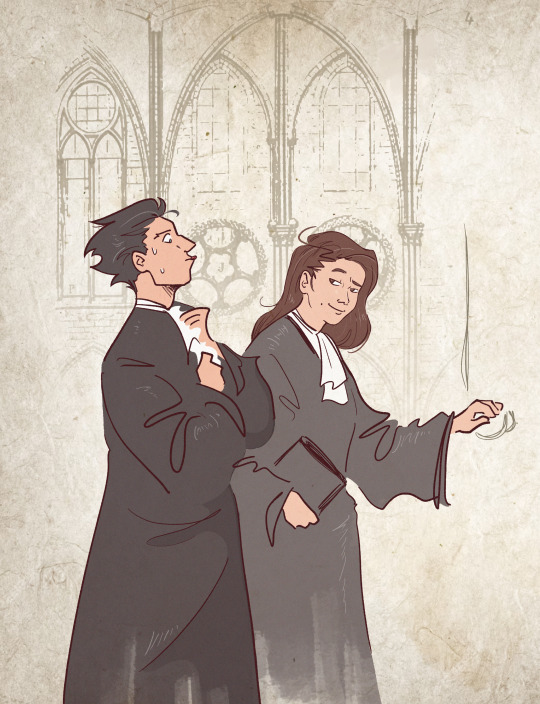
oh to be a rookie attorney in France in love with the bitchy prosecutor next door
#the drama potential with the european costume#imagine storming in a tribunal with the sleeves flopping dramatically behind#edgeworth would live for it#he would never take it off#phoenix would never get the hang of it and it would drive edgeworth mad from across the courtroom#dounart#aa#ace attorney#ace attorney fanart#gyakuten saiban#narumitsu#wrightworth#phoenix wright#phoenix wright fanart#miles edgeworth#miles edgeworth fanart#mia fey#art#fanart#phoenix abesolutely almost strangled himself to death with his cravat at least twice
11K notes
·
View notes
Text


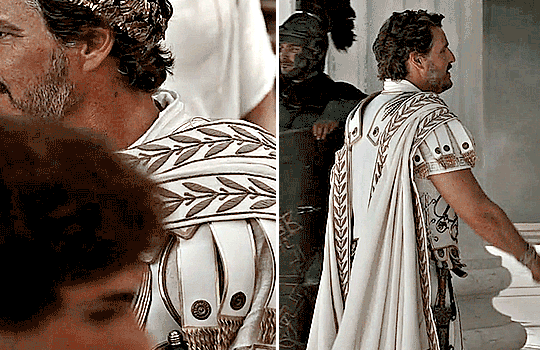


𝐏𝐄𝐃𝐑𝐎 𝐏𝐀𝐒𝐂𝐀𝐋 as 𝐆𝐄𝐍𝐄𝐑𝐀𝐋 𝐌𝐀𝐑𝐂𝐔𝐒 𝐀𝐂𝐀𝐂𝐈𝐔𝐒
Gladiator II (2024). Acacius' ceremonial armor and cloak.
#gladiator ii#pedro pascal#marcus acacius#general acacius#gladiatoredit#period drama#ancient rome#◟ ⋆ out › cali gifs.#cali costume series
2K notes
·
View notes
Text












chinese guzhuang fashion in tang dynasty style (TV dramas from the 1980s)
168 notes
·
View notes
Text


junia rees as princess elizabeth in firebrand (2024) / cate blanchett as elizabeth i in elizabeth (1998)
#perioddramaedit#perioddramasource#weloveperioddrama#onlyperioddramas#elizabeth i#elizabeth tudor#firebrand#elizabeth 1998#junia rees#cate blanchett#tudorerasource#historicwomendaily#*gifs#period drama#tudor dramas#costume dramas#tudor history
383 notes
·
View notes
Text
I don't know who needs to hear this today but:
most adult women wore their hair up, on a normal day when going out in public, for most of western history from at least the late Middle Ages until the 1920s. even after that, wearing truly long, unstyled hair entirely loose was not common until the 1960s
not half-up. not in a ponytail. not braided with the braid hanging loose. at times trailing elements were involved, but the majority of the hair would still be pinned up. at times it was also a social norm that the hair would always be mostly or entirely covered when out of the house
and until around the early 19th century, little girls usually wore their hair up too, if it was long
when "putting one's hair up" became a specifically adult thing, around the 1830s or 40s, it was not related to marriage. it was something teen girls did around age 16 as a marker of social adulthood. even if she was unmarried, she'd wear her hair up. this attitude remained until the bob took over hair fashion in the 1920s, and even then, long hair was usually still worn up
obviously people can do what they want with their art but like. just. just please be aware of this
I have not reblogged so much Dracula fanart because the artist inadvertently made Mina and/or Lucy look uncomfortably young, hair-wise
3K notes
·
View notes
Note
PLEASREE PLEASE SHOW MORE EQUIGAM ART PLEASE!!!!!!



When in doubt — post yaoi art. Or however the saying goes. Perchance.
#doodle#homestuck#gamzee makara#equius zahhak#equigam#thanks for the ask!#and sorry it took so long lol#why the fuck did i decide to ship the two bitches with the akwardest to mash together names possible#and i cant come up with something cute cus people wouldn't know wtf I'm talking about#also i have basically zero imagination#i saw the twitter hs ship pole and that equigam was in it BUT FOR MY OWN GOOD#i decided not to follow it cus i would get insanely tilted lol#apparently it already caused some funny drama so I'm not missing out lmao#anyway I've been preoccupied with Halloween prepping and planing my costume#so wish me luck in making hs horns for the first time lol
1K notes
·
View notes
Text




Mina Harkers red dress in Bram Stokers Dracula in 4k
#dracula#mina harker#bram stokers dracula#perioddramaedit#period drama#costume design#eiko ishioka#gary oldman#wynona ryder#4k#periodedit#gothic horror
1K notes
·
View notes
Text



BRIDGERTON (2020-) 204 - Victory
#bridgerton#bridgerton gif#bridgerton netflix#perioddramaedit#perioddrama#gif edit#gif#edit#bridgerton season 3#perioddramagif#bridgerton edit#bridgerton gif edit#costume drama#costume#perioddramasource#bridgertonedit#tvedit#periodedit#weloveperioddrama#onlyperioddramas#mediagifs#tvsource#userlottie#**lottie's gifs#**lottiesedit
1K notes
·
View notes